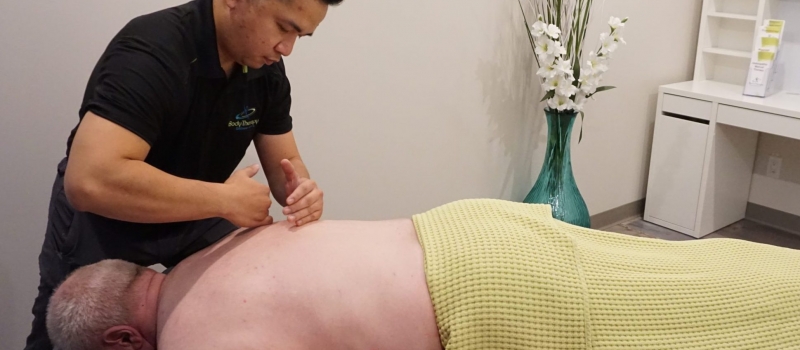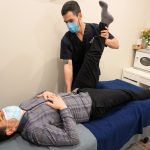What is Myofascial Release?
Myofascial release is an addition to manual therapy, developed by Osteopathic practitioner Dr. A.J Still, the founder of Osteopathy. Fascia is a thin casing of connective tissue that surrounds every organ and muscle. It has a “lubricating” effect, enabling muscles to glide smoothly against one another.
Myofascial release combines soft tissue, craniosacral and muscle energy techniques. These slow and subtle techniques can be used to release fascia and muscle throughout the body. Myofascial release therapy is an established therapeutic approach that can be used to treat chronic and acute pain. The aim of Myofascial release is to bring pain relief, as well as restoring the full range of motion.
The “tight-loose” concept is an integral part of myofascial release. Tightness creates shortness, compression and therefore asymmetry in the tissue. Looseness in another area permits this asymmetry. The tightness creates a tethering effect, which further restricts movement and allows for more tissue compression to occur.
Myofascial pain syndromes such as trigger points and tender points are also addressed. Tissue relaxation is achieved through the reflexive effects of the autonomic nervous system and the application of appropriate techniques that stress the dysfunctional tissues.
How is Myofascial Release Performed?
The awareness of functional anatomy is very important thus assessment before a treatment is an essential tool for accurate and effective treatment. The palpation skills of the therapist to assess tissue for looseness, tightness and inherent mobility, as well as both direct and indirect fascial techniques are combined for assessment and treatment of dysfunction. Techniques include light to moderate traction, range of motion, appropriate tension and twisting action to achieve biochemical and reflex change.

Understanding the fascia and connective tissue techniques:
Most popular techniques overview
Fascial Glide: Therapist’s hands contact the skin and glide it over the deeper structures. The skin is then move into cardinal plane, anteriorly, superiorly, inferiorly, laterally and medially.
Skin Rolling: The thumbs are placed on the skin next to each other while the fingers grasp the skin forming a line. The fingers are pulled towards the thumbs, raising the skin between them from the underlying layer. The thumbs are slowly pushed away from the therapist over the skin, engaging the tissue.
Crossed-hands fascial stretch: The therapist’s forearms are held parallel to each other with the elbows at 90 degrees of flexion. The palms of the hands contact the client’s skin with the hands positioned so the fingers are pointing away from each other. Slack is taken out of the tissue by moving the hands away from each other with appropriate depth used.
Some benefits and effects of myofascial release:
- Increases the excursion and flexibility of fascia by moving it towards, and beyond, the restrictions.
- Reduces painful soft tissue dysfunctions
- Promotes symmetry of the “tight-Loose” tissue
- Releases the restrictions caused by the tight fascial system that affects mobility, contractibility, flexibility, and interconnectivity of the musculoskeletal system
- Reduces pain
- Releases knots/trigger points
- Improves muscle function
- Enhances circulation by breaking up the tight areas where blood flow may become restricted
- Reduces exercise-related soreness




